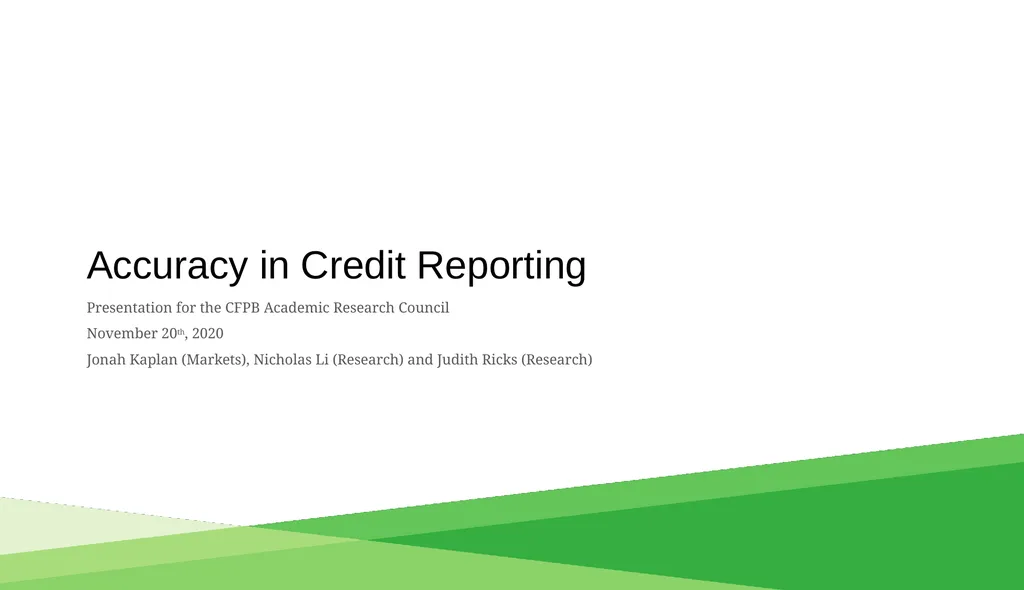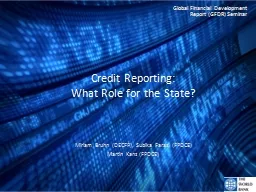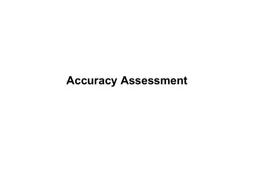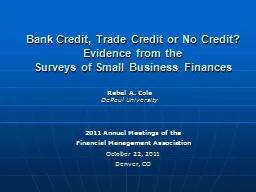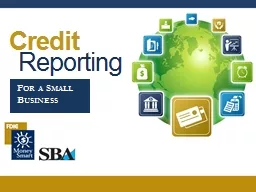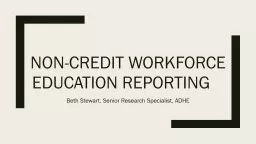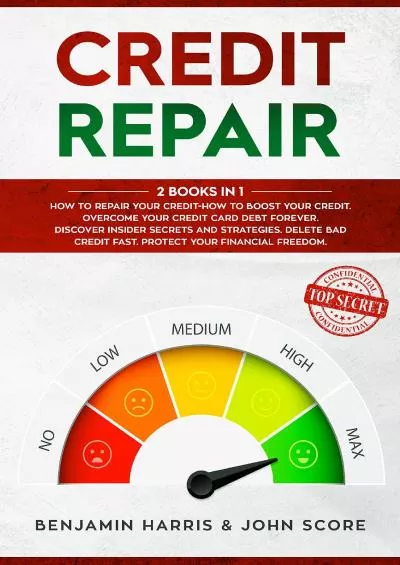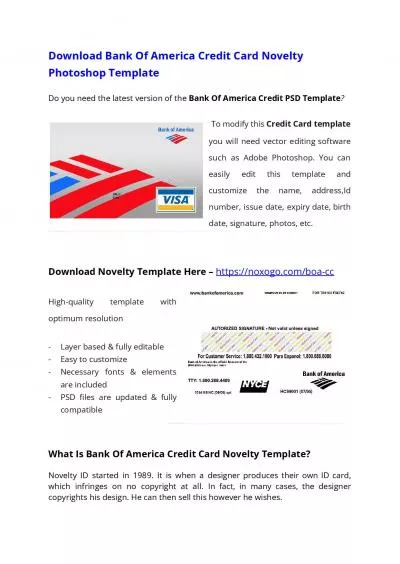Accuracy in Credit Reporting Presentation for the
Author : cheryl-pisano | Published Date : 2025-06-27
Description: Accuracy in Credit Reporting Presentation for the CFPB Academic Research Council November 20th 2020 Jonah Kaplan Markets Nicholas Li Research and Judith Ricks Research Credit access plays a vital role in the lives of consumers Many
Presentation Embed Code
Download Presentation
Download
Presentation The PPT/PDF document
"Accuracy in Credit Reporting Presentation for the" is the property of its rightful owner.
Permission is granted to download and print the materials on this website for personal, non-commercial use only,
and to display it on your personal computer provided you do not modify the materials and that you retain all
copyright notices contained in the materials. By downloading content from our website, you accept the terms of
this agreement.
Transcript:Accuracy in Credit Reporting Presentation for the:
Accuracy in Credit Reporting Presentation for the CFPB Academic Research Council November 20th, 2020 Jonah Kaplan (Markets), Nicholas Li (Research) and Judith Ricks (Research) Credit access plays a vital role in the lives of consumers. Many consumers have varying types of credit (e.g., mortgages, auto loans) and often have multiple of the same account types (e.g., credit cards, student loans) The status of any account can be reported in an individual’s credit report. This credit reporting is directly tied to credit scoring algorithms and a consumer’s access to credit. 2 Potential effects of inaccurate credit reporting Inaccurate credit reporting can affect a consumer’s credit score. Effect could be positive or negative Example: Reporting error due to a current account being misreported as delinquent. Similar consumers can have arbitrarily different credit scores. Example: Institutional differences in the approach to furnishing information. Consumers have to make a choice between Spending resources (e.g., time and money) to correct inaccurate information OR Bearing the cost of the inaccuracies 3 The 2012 FTC Study 4 Assessed accuracy in credit reporting and the dispute process, where consumers can request that reported information be reviewed and potentially corrected. Consumers were invited to review credit reports for errors. When errors were found, consumers were asked to dispute the errors. Findings: 26% of participants disputed an error in at least one NCRA file 5% had substantial errors that decreased their credit tier 70% believed that their data remained inaccurate even after dispute These findings are qualitatively similar to a different study by PERC (2011). A lot has changed since the 2012 FTC study There has been an increased regulatory focus on accuracy. CFPB’s Supervisory program Multi-state/Nationwide Credit Reporting Agency (NCRA) settlement There has been substantial growth in consumer awareness of credit reporting and scoring issues. No fee score access programs available through financial institutions and lead generation firms (e.g., Credit Karma) Data breaches (e.g., Equifax breach in September 2017) 5 A lot has changed since the 2012 FTC study (continued) There also has been an increased interest among policy experts to understand credit reporting and accuracy. Natural Disasters and Credit Reporting (CFPB, 2018) Payment Amount Furnishing and Credit Reporting (CFPB, 2020) 6 Considerations for new analysis Use of the Bureau’s Consumer Credit Panel (CCP) The CCP is a 1-in-48 sample of consumer credit reports with tradeline-level information. The CCP can be used to analyze aggregate trends in credit reporting
